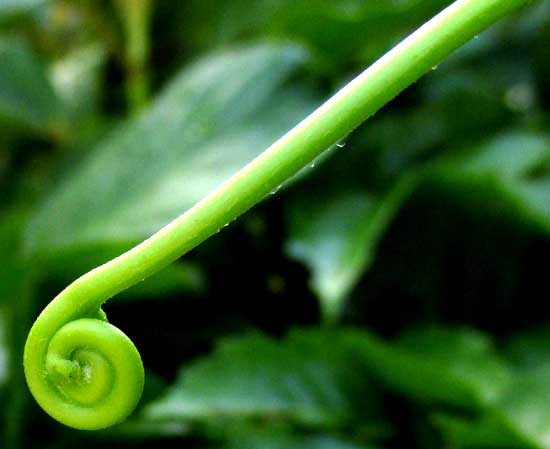Excerpts from Jim Conrad's
Naturalist Newsletter
from the May 8, 2016 Newsletter with notes from a visit in mid April to Lacanja Chansayab in the Lacandon Reserve; elevation 200m (650ft), N16.604°, W90.917°; Chiapas, MÉXICO
CLIMBING FERN
On April 14th as I hiked small gravel backroads around Lacanja Chansayab in Chiapas's Lacandon Reserve, along the road I came upon a vine with extraordinary compound leaves twining across a dense wall of tree and shrub branches, shown below:
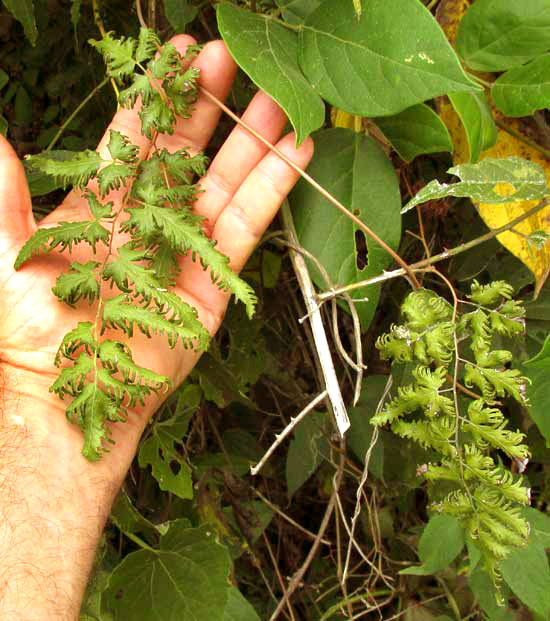
In Mississippi we've something like this. You can confirm how similar the "leaves" are at www.backyardnature.net/n/x/climfern.htm
The Mississippi plant was the invasive Japanese Climbing Fern, Lygodium japonicum, a real fern, with extraordinary anatomy. Our Chiapas fern is the closely related LYGODIUM VENUSTUM, native from central Mexico and the Caribbean south through Central America and most of tropical South America. Species of Lygodium often are known as climbing ferns.
What's amazing about climbing fern anatomy is that what appears to be the fern's wiry stem stretched across my fingers in the picture is actually the frond's midrib, or rachis. The two "fronds" in the picture and several others along the wiry stem, are subdivisions of one extremely long frond. In the technical words of my old Bailey's Manual of Cultivated Plants, in the genus Lygodium "... the 'lvs.' are secondary pinnae, which are palmately or pinnately compound or decompound."
On the margins of the leaflets, or secondary pinnae, notice the tiny, dark green, fingerlike items, of which a close-up of several is seen below:
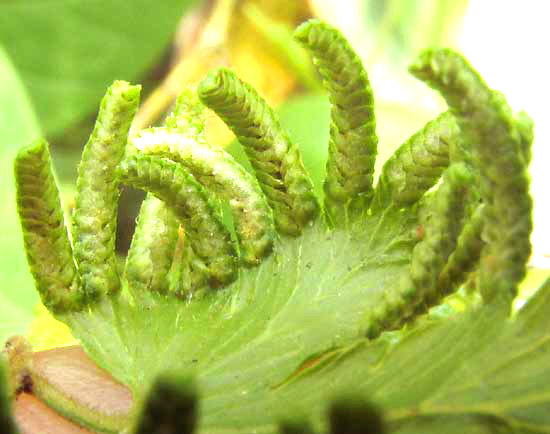
Ferns reproduce with spores, and these structures, sometimes called marginal spikes, are where the spores are produced. You might know that fern spores are produced inside microscopic, baglike-items known as sporangia, and in many kinds of ferns the fronds' groups of sporangia are partly or completely covered with a thin layer of tissue called the indusium. This climbing fern's marginal spikes are composed of overlapping indusia. In the picture, each green, scale-like item is an indusium that if you should peel one back you'd find sporangia inside which spores are developing.
In Mexico Lygodium venustum sometimes is known as Hierba de la Víbora, which can be loosely translated as Snake Plant. It's famed as treatment for snakebite and scorpion stings. After being bitten, the fronds can be eaten directly. Also, teas can be made of the whole plant for diarrhea, dysentery, and for various female diseases.
from the December 14, 2018 Newsletter with notes from a camping trip into Chiapas, the southernmost state of MÉXICO
A YOUNGER CLIMBING FERN
Last October 2nd, during a visit to the area around Palenque Ruins in Chiapas, the same species of climbing fern described above turned up, but it was less mature and looked a bit different from our earlier plant, which was photographed in May. Below, you can see the recent find's less mature fronds:
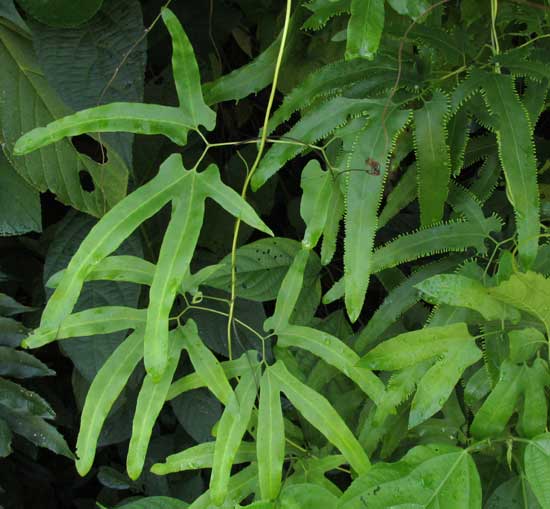
About three climbing fern species, all in the genus Lygodium, might be found in the area. This one, Lygodium venustum, is most easily distinguished from the others by the manner in which the bases of its fingerlike frond sections project backward a little, forming "ears." Technically, they're said to be "hastate."
The feature indicating the immaturity of these fronds is that the margins of some of the fingerlike sections, such as those seen in the image's top, right, bear an unusual fringe of knobby items. Those knobby items, sometimes called marginal spikes, are where the fern's spore-producing sporangia are found, and on our previous find they were much larger. A close-up of some marginal spikes just starting to form, and also showing this fern's interesting venation, appears below:
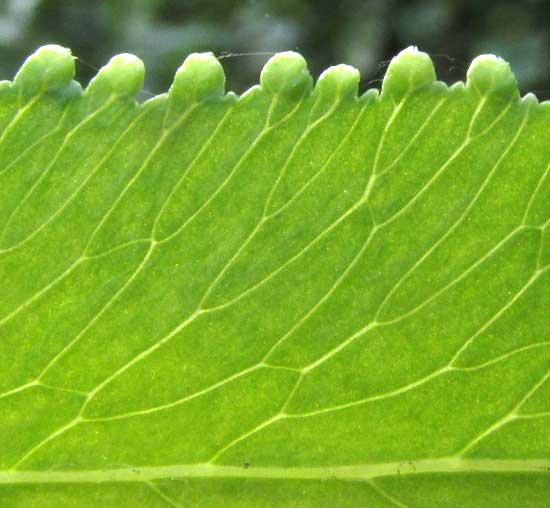
Climbing ferns are such unferny-looking plants that some find it hard to believe that they're ferns. They're even more remarkable when you consider that in the genus Lygodium the whole viny plant is just one much divided frond. However, our immature plant was still issuing new frond sections, and they were uncurling in the exact "fiddlehead" fashion of normal ferns -- they're "circinate" -- as shown below:
